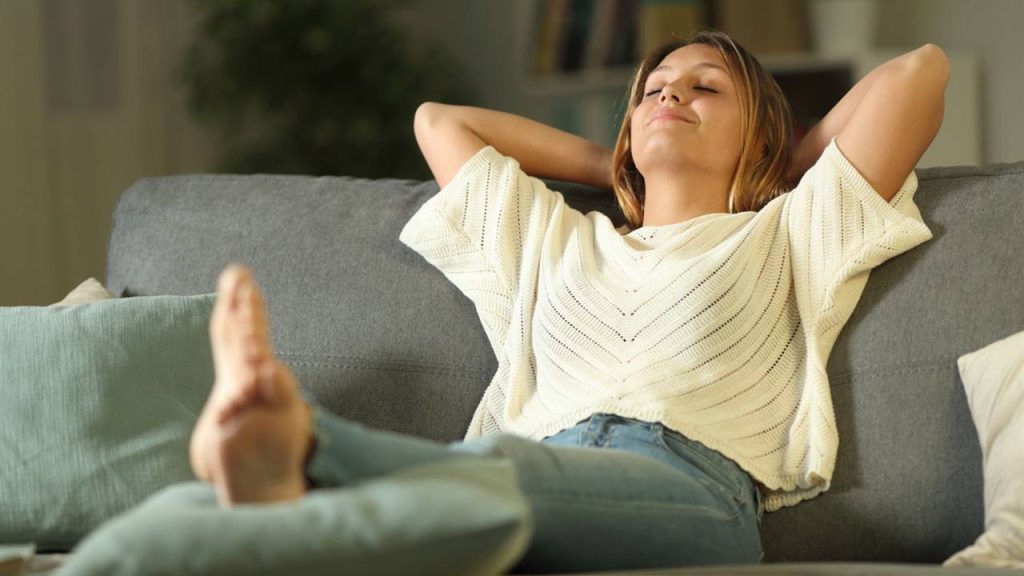With this guided meditation you will practice very simple and highly effective conscious breathing exercises to relax and remove stress.

Stress is one of the most common ills of our society and in the long run can cause many health problems. You will know that you are stressed because you will feel restless, worry excessively about everything, feel muscle tension, headaches and even notice your breath choppy or apneas. When we feel stress, the world seems to go against us and at a much faster pace.
One of the things that can serve for this is the Jacobson Progressive Relaxation. In this meditation I guide you to practice this type of relaxation and free yourself from stress.
In addition to performing this relaxation we can work on two of the most important aspects for good relaxation: conscious breathing and attention.
2 RELAXATION EXERCISES AGAINST STRESS
The triggers of stress can be many, from an overwork to a family problem. Today I would like to propose an exercise that can help you relieve stress and its symptoms.
CONSCIOUS BREATHING
Conscious breathing is important because it represents the gateway to control our nervous system. If we manage to master our breathing, we can relax and, therefore, relieve stress.
Remember that stress and anxiety are related to a hyperactivity of the sympathetic nervous system. The sympathetic nervous system is activated when we need to be attentive or we are hungry or we face a dangerous situation. Blood travels to the lungs and muscles, the heart rate speeds up and our breathing becomes shallower in order to prepare us for flight. The brain does not distinguish what is real from what is not. Therefore, if we mentally create dangerous situations, our body prepares to flee as if a threat is really happening that we are only imagining.
Instead, what we need to do is learn how to activate the parasympathetic nervous system. The parasympathetic nervous system is usually active when you go to sleep, when you connect with your emotions or when you are relaxed. If we manage to breathe by prolonging the exhalations through the nose, we will be able to reduce the hyperactivity of the sympathetic nervous system and we will enter fully into meditation.
Therefore, during this relaxation you will see that we give great importance to breathing that must be diaphragmatic, that is, taking the air into the gut and inhaling and exhaling through the nose. We will guide some very simple and highly effective conscious breathing exercises.
MINDFULNESS
As I was saying, our brain does not differentiate between what we imagine and what is really happening. Therefore, if you continue to have fleeting thoughts that cause you stress such as, for example, “I do not get to everything”, “I have a lot of work” or “this surpasses me” we will only be able to feed more stress. So, it is important to bring our attention to a space of peace and calm where you can relax the mind and relieve the muscle tension that you may have accumulated.
To do this, we will also practice Jacobson’s Progressive Relaxation. This relaxation is one of the best known. It was created by Dr. Jacobson in 1929 and it is about tensing and loosening muscle groups. There are certain stress-related thoughts and situations that cause muscle tension. With Jacobson’s Progressive Body Relaxation, we tighten the muscles expressly, we notice the muscle tension and then we relax it and free ourselves from stress.
RELAXATION FOR STRESS RELIEF: GUIDED MEDITATION
After the conscious breathing exercises, we will practice this relaxation. You will see that it is very simple and highly effective.
- Relax by sitting in a chair with your back upright, but no tension. So surely you do not fall asleep and you will still be comfortable.
- If you feel like it, you may find it rewarding to do meditation with headphones. You will feel the most immersive sound and you will be able to isolate yourself better from the outside.
- If during meditation you need to move, go ahead. If you are uncomfortable, please settle into a more comfortable posture with gentle movements.
- If you can, download all the meditation and then put your device into airplane mode.
- You can do the meditation at any time of the day. Maybe you are having a period of punctual or prolonged stress in time, it does not matter. You can do this meditation just at the moment you feel the peak of stress or as prevention.
- Put some essential oil in the diffuser or some incense. For stress I recommend aromas that relax you and help you balance your nervous system. I recommend, for example, tangerine and lavender. Besides, the two of them are wonderful together.
- During a peak of stress, try to let go of stimulants, such as coffee or tea. You can choose the infusion of rooibos that, although it does not have properly relaxing properties, I recommend it because it does not have theine and will be pleasant as a transitional infusion to leave the stimulants. So that it is not too hard at first, you could replace one of the coffees or teas you drink a day with a rooibos.
- Remember to help yourself with wonderful natural remedies such as, for example, infusions of relaxing plants. Opt for infusions of valerian, lavender or lemon balm.
Finally, remember that everything happens and the most important thing is always to take care of yourself and your health. With this relaxation you will feel better and you can practice it as many times as you need!



